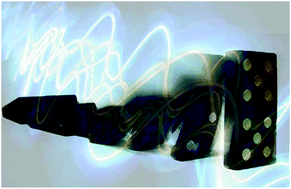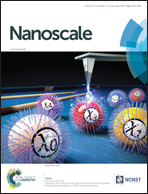Experimental evidence of charged domain walls in lead-free ferroelectric ceramics: light-driven nanodomain switching†
Abstract
The control of ferroelectric domain walls at the nanometric level leads to novel interfacial properties and functionalities. In particular, the comprehension of charged domain walls, CDWs, lies at the frontier of future nanoelectronic research. Whereas many of the effects have been demonstrated for ideal archetypes, such as single crystals, and/or thin films, a similar control of CDWs on polycrystalline ferroelectrics has not been achieved. Here, we unambiguously show the presence of charged domain walls on a lead-free (K,Na)NbO3 polycrystalline system. The appearance of CDWs is observed in situ by confocal Raman microscopy and second harmonic generation microscopy. CDWs produce an internal strain gradient within each domain. Specifically, the anisotropic strain develops a crucial piece in the ferroelectric domain switching due to the coupling between the polarization of light and the ferroelectric polarization of the nanodomain in the (K,Na)NbO3 ceramic. This effect leads to the tuning of the ferroelectric domain switching by means of the light polarization angle. Our results will help to understand the relevance of charged domain walls on the ferroelectric domain switching process and may facilitate the development of domain wall nanoelectronics by remote light control utilizing polycrystalline ferroelectrics.



 Please wait while we load your content...
Please wait while we load your content...